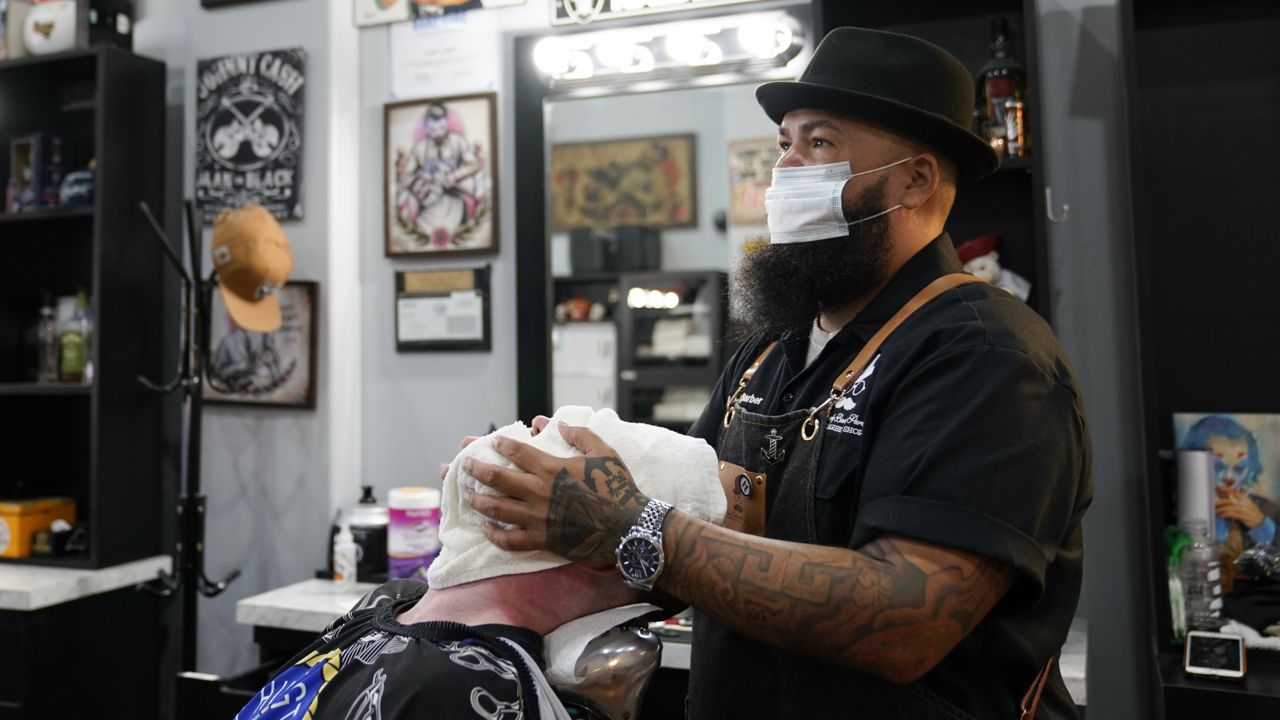SANTA ANA Calif. (CNS) — Three more people have succumbed to COVID-19 in Orange County, hiking the death toll to 1,292, but the county continued its trend of keeping new daily diagnoses below 200 as hospitalizations ticked up.
The Orange County Health Care Agency reported 144 new cases of the coronavirus Wednesday, raising the cumulative total to 55,042. Since Sunday, the county has reported just six COVID-19 fatalities, compared with 72 last week and 77 the week before.
The positivity rate, which is reported each Tuesday, inched up from 3.1 percent last week to 3.2 percent, but the daily case rate per 100,000 people rose from 4.4 to 5.2, which is higher than the cutoff of 3.9 to qualify for a move from the red to the orange tier in the state's coronavirus monitoring system.
According to the OCHCA, hospitalizations increased from 176 Tuesday to 183, with the number of patients in intensive care up from 63 to 64. The change in three-day average hospitalized patients increased from 4.5 percent to 7.6 percent.
The county has 30 percent of its intensive care unit beds and 66 percent of its ventilators available.
Falling short of reaching the orange tier frustrated some county supervisors, who grumbled at their meeting Tuesday about how difficult it will be for urban counties such as Orange to ever reach the standard to get to the orange tier.
"We have to do more testing to meet the next step," said Board Chairwoman Michelle Steel. "But when you do more testing there's more people, but most people are asymptomatic. At this point our hospitals are very low and we didn't have any death[s] yesterday or something like that... We are doing really well so how can we jump out of this [red] tier."
Dr. Clayton Chau, the director of the OCHCA and the county's chief health officer, said increased testing can lower the positivity rate, but it can also lead to an increase in the case rate per 100,000. The state introduced the health equity measure, which launched Tuesday, to help counties address high case counts concentrated within certain ZIP codes that include high- density housing and language barriers, among other issues.
"If you're able to bridge the gap and bring it to the overall positivity rate you can move up to the next tier," Chau said.
Orange County got a head start on that weeks ago with its Latino Health Equity program that raised awareness of coronavirus within hot spots in Santa Ana and Anaheim, Chau said. Positivity rates as high as 20 percent have fallen to single digits in some of those neighborhoods, Chau said.
There is an "accelerator" in the state's formula that if the positivity rate makes it to the least-restrictive yellow tier but the case rate is in the red, then a county can move up to orange, Chau said.
Supervisor Don Wagner asked why if there has been an increase in cases there hasn't been a significant impact on local hospitals. Chau said that is because the case rates are increasing among a younger demographic that can usually weather the virus without hospitalization.
Supervisor Doug Chaffee encouraged Chau to "keep pushing" on the reopening of theme parks such as Disneyland and Knott's Berry Farm.
Supervisor Lisa Bartlett, the president of the California State Association of Counties, said she serves on a "kitchen cabinet" committee of the organization that is lobbying the state to let theme parks move into the orange tier category instead of being lumped in with mass gatherings like live concerts and sporting events in the yellow tier. Chau said he is the only county health officer who has made that recommendation to the state.
Bartlett said the yellow tier would reflect when a county has "eradicated COVID," so it would be unfair to restrict theme parks to that status before reopening.
"Disneylands have opened across the world and have not seen any spikes in COVID," Bartlett said. "And they have significant health and safety protocols ... We are collectively pushing, pushing, pushing to have that done sooner rather than later."
To qualify for the orange tier, the positivity rate must be 2 percent to 4 percent, and the case rate per 100,000 must be 1 percent to 3.9 percent.
Moving to the orange tier means retail businesses could operate at full capacity, instead of 50 percent as required in the red tier. Shopping malls could also operate at full capacity, but with closed common areas and reduced food courts, just as in the red tier.
According to OCHCA data, 911,362 COVID-19 tests have been conducted, including 6,066 reported Wednesday. There have been 49,303 documented recoveries.



